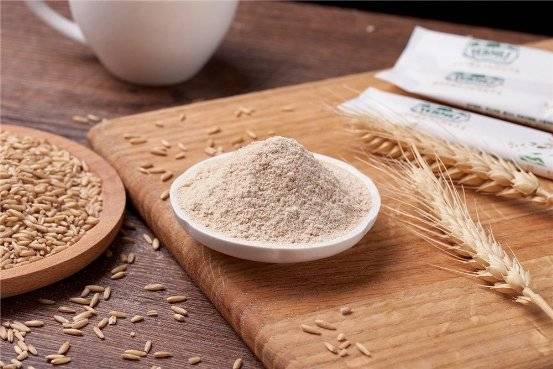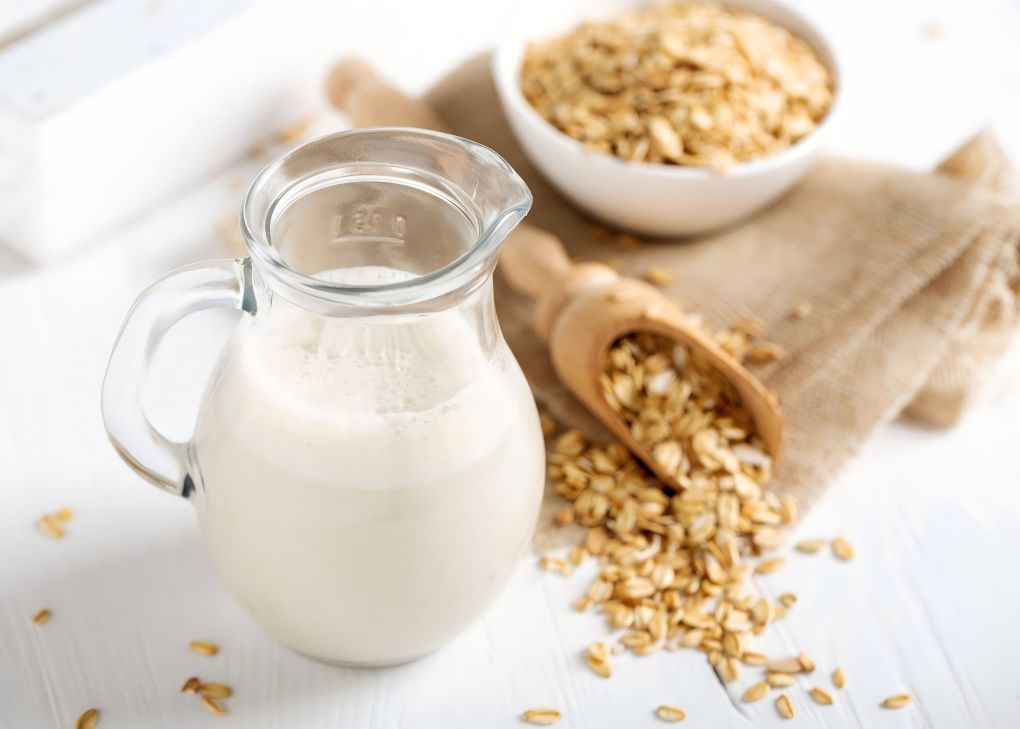What Is the Benefit of Oat Beta Glucan for Lowering Blood Lipids?
Coronary heart disease (CHD) is one of the leading causes of morbidity and mortality in humans. Dyslipidemia can increase the incidence and mortality rate of CHD [1]. For every 0.26 mmol/L increase in low-density lipoprotein cholesterol (LDL-C) concentration, the risk of cardiovascular disease increases by 12%; for every 10% decrease in total cholesterol (TC), the risk of CHD death is expected to decrease by 15% [2]. TC and LDL-C are positively correlated with cardiovascular risk. Reducing LDL-C can significantly reduce the risk of cardiovascular disease, and there is a dose-response relationship [1,3]. Therefore, lowering LDL-C levels is the primary intervention target for lipid-modifying therapy [1,3]. A study in the American Journal of Obstetrics and Gynecology [4] showed that blood lipid levels in early pregnancy are associated with maternal cardiovascular burden, which may be related to the fact that blood lipid levels can increase the risk of preeclampsia and persistent postpartum hypertension.
Diet and medication can lower blood lipids and reduce the risk of cardiovascular events. Dietary intervention is the first line of treatment. Dietary fibre resists digestion by human gastrointestinal enzymes. Based on their solubility in water, dietary fibres can be divided into insoluble fibres, including structural fibres or matrix fibres (lignin, cellulose and some hemicelluloses), and soluble fibres, which are fibres that naturally form gels (pectin, gum and the remaining hemicelluloses). Increasing the intake of viscous soluble dietary fiber has been recommended as a safe and practical way to lower cholesterol [1]. In 2010, the European Food Safety Authority (EFSA) approved oat beta-glucan for lowering cholesterol and reducing the risk of CHD. This study aims to summarize the different effects of oat β-glucan in domestic and foreign studies, explore the physicochemical properties, safety, lipid-lowering mechanism and intervention effect of oat β-glucan on blood lipids, and further provide dietary treatment for patients with dyslipidemia during pregnancy and high risk of CHD, so as to reduce the occurrence of complications caused by CHD and dyslipidemia during pregnancy.
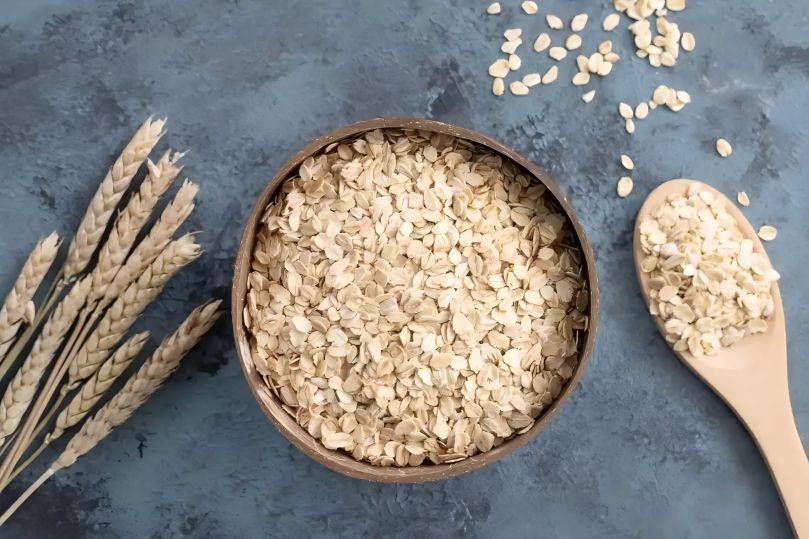
1 Overview of oat β-glucan
In 1942, a non-starch glucose similar to Icelandic lichenin was isolated and extracted from oats, and its structure was different from that of barley β-glucan. In 1986, it was named β-glucan, that is, oat β-glucan, and research on oat β-glucan began. Beta-glucans are divided into water-soluble beta-glucans and non-water-soluble beta-glucans. The water solubility is mainly affected by the beta-(1→3) glycosidic bond and the degree of polymerization. Oat β-glucan is a viscous non-starch polysaccharide found in the cell walls of oat aleurone and subaleurone [2]. It is a linear macromolecule formed by β-D-glucose units linked by 70% β-(1→4) glycosidic bonds and 30% β-(1→3) glycosidic bonds. The continuous β-(1→4) glycosidic bonds are separated and connected by a single β-(1→3) glycosidic bond [5]. Oat β-glucan is mainly found in the bran, and under the condition of a consistent concentration, the β-glucan molecule weight (MW) and viscosity in the oat bran are greater than those in the endosperm. Therefore, oat bran is mostly used as the raw material for oat β-glucan extraction.
1. 1 Physical and chemical properties
The physiological effects of oat β-glucan are mainly achieved by increasing the viscosity of digestive juices in the intestine, which is affected by various factors such as the chemical structure of oats, MW, dissolution rate and degree, solution rheology, growth, storage conditions, processing, and extraction [1]. The natural chain length of oat β-glucan is about 20,000 glucosyl units, and the MW is as high as 3 million g/mol. A fairly wide range of average or peak MWs of oat β-glucan has been reported in the literature [5].
The average MW ranges from 1 × 106 to 2 × 106 g/mol, but because the pyranose chain is easily broken down by enzymatic or chemical hydrolysis, mechanical shearing or heat treatment, the MW in commercial foods is therefore between 0.4× 106 and 2 × 106 g/mol. The US Food and Drug Administration (FDA) recommends consuming 3 g of oat beta-glucan per day to help lower blood lipids. However, viscosity, solubility, MW and dosage are equally important and are the basis of its cholesterol-lowering activity [6 - 7]. Viscosity is the main reason why oat beta-glucan exerts physiological effects, and viscosity is closely related to dosage, MW and the food matrix (solubility) [5, 7]. there has been debate about the dosage, MW, administration method and effect of oat β-glucan on different ethnic groups, and different scholars have reached different conclusions. An in vitro experiment [7] confirmed the repeatability and reproducibility of the solubility, viscosity and MW of β-glucan in different oat foods.
1.1.1 MW affects lipid-lowering effect
The viscosity and cholesterol-lowering effect of oat beta-glucan is positively correlated with its MW. Oat beta-glucan with an MW of at least 1,200 kDa is required to produce a cholesterol-lowering effect [2]. A multicenter clinical trial by Wolever et al. [1] showed that subjects receiving medium- to high-MW oat beta-glucan had a significant LDL-C reduction of 4.8% to 6.5%, with no racial differences, while those given low MW had no significant effect. The higher the MW, the higher the viscosity, and the more significant the lipid-lowering effect.
1.1.2 Solubility affects lipid-lowering effect
When oat β-glucan is administered in the form of milk, fruit juice or drinks, each gram of β-glucan can significantly lower serum LDL-C by 0.063, 0.052 and 0.050 mmol/L. The addition of oat beta-glucan to a liquid vehicle may increase its LDL-lowering effect. In contrast, the addition of oat beta-glucan to solid foods, including bread and biscuits, has produced conflicting results [2].
1.2 Safety
1.2.1 Non-toxic to normal cells
A 2018 study by Romanška et al. [8] showed that oat beta-glucan has no cytotoxic effect on normal cells, but has a cytotoxic effect on cancer cells, and the cytotoxicity increases with the concentration of beta-glucan. Long-term use of lipid-lowering drugs can have a long-term effect on people with blood lipid metabolism disorders, especially when used in combination with statins and fibrates [2]. Therefore, its safety is better than that of statins.
1.2.2 Dietary fiber within the recommended intake range does not affect the absorption of other nutrients
Different intake ranges of β-glucan produce different effects. In 2002, the American Dietetic Association (ADA) [9] stated that excessive dietary fiber intake has potential negative effects, including reduced absorption of vitamins, minerals, proteins and energy. However, dietary fibre consumed within the recommended intake range is unlikely to cause nutrient absorption problems in healthy adults. In 2005, the Institute of Medicine [10] proposed that as part of a balanced diet, within the recommended dietary fibre intake range, no significant effect of cereal fibre on mineral absorption (such as iron, zinc, calcium and magnesium) has been found. Therefore, it is recommended to consume dietary fibre within the recommended intake range.
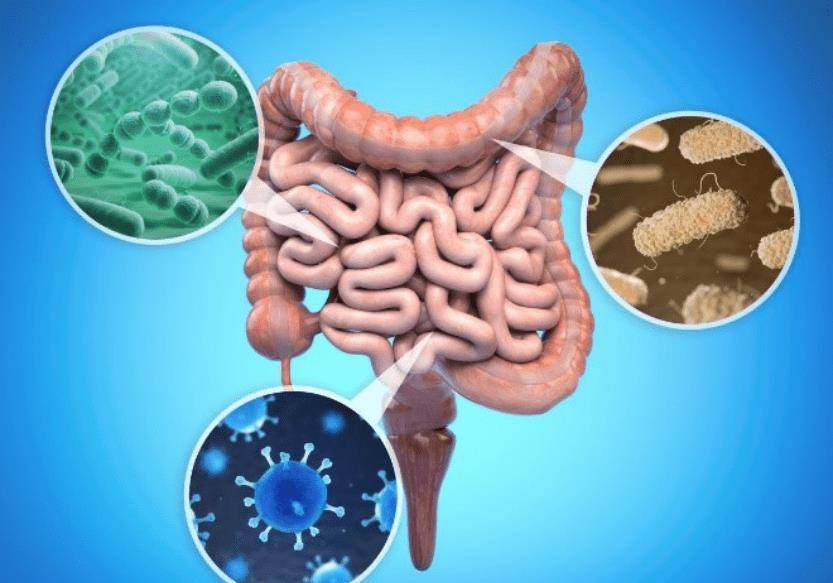
1.2.3 Allergenicity
In 2007, Rashid et al. [11] suggested that oats and oat products may cause allergic reactions in a small number of allergic people, and that oats should not be allowed in a gluten-free diet. However, a study by Hoffmanov á et al. [12] showed that oats can be tolerated by people with celiac disease in remission as part of a gluten-free diet. Oat proteins are more easily digested by proteases than proteins from other cereals such as wheat. These properties significantly reduce their immunogenicity and toxicity for people with celiac disease. People with celiac disease can safely eat pure oats that are not contaminated with other cereals such as wheat. However, individual sensitivity to oat β-glucan cannot be ruled out. The potential allergenicity of β-glucan itself has been studied, but no evidence has been found. To test the potential sensitivity of celiac patients to an oat diet, suitable methods need to be developed to assess the risk of individual oat varieties in celiac patients. In addition, β-glucan is not included in the 2010 FDA list of the 8 major food allergens.
This shows that oat beta-glucan is safe for human application. In clinical studies, subjects did not experience significant gastrointestinal symptoms, except for mild and transient gastrointestinal effects such as flatulence and abdominal discomfort [13]. It is feasible to apply it in patients with elevated blood lipid abnormalities, and it has a wide range of applications and high safety compared to lipid-lowering drugs. Samples containing soluble β-glucan mainly produce a feeling of smoothness, fineness and a viscous residue, and this palatability makes patients more compliant with a gluten-free diet [14-15].
1.3 Application of oat β-glucan
In addition to lowering hyperlipidemia, oat β-glucan powder can also be used in many other ways, such as lowering blood sugar, antioxidant effects, immunomodulatory and antitumor effects, improving the intestinal environment and increasing satiety.
1.3.1 Blood glucose lowering
A study by Tosh [16] showed that the peak blood glucose response (PB GR) is often more sensitive than the area under the curve (AUC) or the glycemic index (GI). After treatment with 4 g of β-glucan, the PBGR and insulin AUC were significantly reduced. Insulin did not increase significantly in either the experimental group or the control group, indicating that the postprandial insulin response was not disproportionately increased, and oat β-glucan reduced postprandial blood glucose in a dose-dependent manner. Oat β-glucan forms a highly viscous environment in the intestine, which quickly traps high-glycemic-index foods, forming a protective layer that slows glucose absorption, reduces postprandial insulin concentrations and improves insulin sensitivity. However, ingestion of β-glucan has no significant effect on fasting blood glucose or insulin concentrations in hypercholesterolemic patients [17].
1.3.2 Antioxidant
After oat beta-glucan was fed to rats with hyperlipidemia, it could reduce serum malondialdehyde (MDA), the content of cerebral lipofuscin, and also reduce the activity of serum superoxide dismutase (SOD), improve the activity of SOD in the body, and increase the activity of serum total antioxidant capacity (T-AOC). It prevents atherosclerotic lesions induced by hyperlipidemia by reducing the production of oxygen free radicals, scavenging peroxides, protecting biological membranes, and inhibiting lipid peroxidation [18]. Both low- and high-molecular-weight oat beta-glucans showed antioxidant activity in both liver and stomach tissue, resulting in a reduction in the production of reactive oxygen species. High-molecular-weight beta-glucans appear to be more antioxidant in vivo, especially in the presence of gastrointestinal inflammation. Therefore, foods rich in oat beta-glucans are considered to be effective drugs for treating inflammatory gastrointestinal diseases [19].
1.3.3 Immune regulation and anti-tumor effects
Beta-glucan is a biological response modifier with potential anti-tumor properties that modulates both innate and adaptive immune responses [20]. Pan et al. [21] showed that oat beta-glucan can induce monocytes to increase the expression and production of tumor necrosis factor (TNF-α) and interleukin 6 (IL-6) mRNA through metabolic reprogramming after stimulation with lipopolysaccharide or Pam 3C SK4. In addition, consumption of oat beta-glucan can lead to transactivation of the nuclear factor NF-κB in intestinal leukocytes (such as dendritic cells (DCs)) and specific intestinal cells (such as M cells), which protects them from stronger attacks during pathogen infection, thereby affecting the intestinal immune response and preventing inflammation [22].
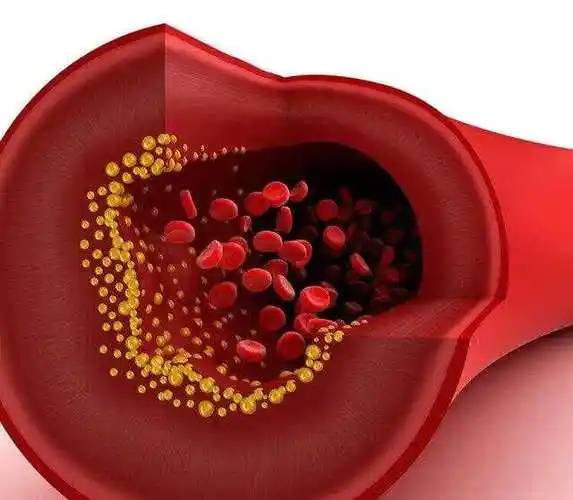
Oat β-glucan induces innate immunity and activates intestinal immune cells through metabolic reprogramming, providing important evidence that dietary fiber can maintain the long-term reactivity of the innate immune system and improve immunity, which may be beneficial for the prevention of infectious diseases or cancer. β-glucan can also exert an anti-tumor effect by activating dendritic cells through contact with Dectin-1 receptors [20]. However, the mechanism by which beta-glucan destroys cancer cells is very complex and not yet fully understood. A study [8] showed that the immunomodulatory and anticancer effects of glucan are related to its structure, MW and conformation.
1.3.4 Improves the intestinal environment
Oat β-glucan improves the intestinal environment by changing the microflora, promoting the formation of short-chain fatty acids (acetic acid, propionic acid, butyric acid, etc.) in the intestine, lowering the intestinal pH, and creating an acidic environment that inhibits the growth and reproduction of pathogenic bacteria and saprophytes. This reduces the number of pathogenic bacteria and saprophytes in the intestine, which reduces the source of carcinogens in the intestine, increases the number of probiotics, and alters the potential for bile acid metabolism. It can be used as a prebiotic for the human body [23]. Oat β-glucan may be the dietary intervention of choice for the long-term safe maintenance of cardiovascular and metabolic health, and this is enhanced by the microbiome[24].
1.3.5 Increase satiety
Oat β-glucan can affect satiety by increasing viscosity. When viscosity increases, mRNA expression of neuropeptide Y in the arcuate nucleus of the hypothalamus decreases, and anorectic gastrointestinal hormones increase, thereby increasing satiety. However, due to the lack of a standardized method for measuring viscosity and the inherent substances that affect appetite, it is difficult to locate the effect of oat β-glucan on satiety. Overall, it has a positive effect on increasing satiety [5]. Whether oat β-glucan increases satiety and reduces appetite, affecting food intake at the next meal, has prompted further research. Previous evidence has shown that oats can promote weight control by reducing subjective appetite and food intake at the subsequent meal. However, not all studies are consistent.
Zaremba et al. [25] showed that 4 g of high MW oat beta-glucan delayed gastric emptying and reduced appetite, but did not affect the amount of food consumed by the subjects. Wolever et al. [26] demonstrated in 2020 that oat beta-glucan can delay gastric emptying. This is consistent with previous research findings, and no significant effect of oat β-glucan on appetite, food intake, or gastrointestinal hormones that affect appetite was found compared to the control group. This indicates that under the current experimental conditions, neither the dose nor the MW of oat β-glucan affected appetite or food intake compared to the control group. Therefore, further studies are needed to demonstrate the effect of different viscosities on appetite and food intake through standardized methods of measuring viscosity.

2 Oat beta-glucan improves dyslipidemia
2. 1 Oat beta-glucan improves different blood lipid markers
In 2016, the University of Toronto in Canada and the European Journal of Clinical Nutrition conducted a meta-analysis of 58 clinical trials involving 3,974 subjects to evaluate the effect of oat beta-glucan on cardiovascular disease risk factors (LDL-C, non-HDL-C, apoB). It was pointed out that an average of 3.5 g/d oat beta-glucan for a period of 6 weeks had an overall improvement effect on blood lipids, effect was a 4.2% decrease in LDL-C, a 4.8% decrease in non-HDL-C, and a 2.3% decrease in apo B [27]. 3 % [27]. A randomized double-blind crossover trial in 2020 with patients with moderate hypercholesterolemia showed that oat beta-glucan intake significantly reduced the levels of TC, LDL-C or non-HDL-C. After a washout period of several weeks, without continuous supplementation with oat beta-glucan, the TC and LDL-C concentrations tended to return to baseline values, which highlights the importance of regular and sustained oat beta-glucan supplementation [14]. The above studies show that oat beta-glucan can improve blood lipid indicators to varying degrees, and that oat beta-glucan should be supplemented regularly and continuously.
2.2 The dose-response relationship between oat beta-glucan and blood lipids
A dose-response relationship between fibre intake and a reduction in serum TC was first given in a meta-analysis, i.e. an average of 0.045 mmol/L and 0.057 mmol/L for TC and LDL-C, respectively, per gram of dietary fibre [28]. There is no clear dose-response relationship between soluble fibre and changes in HDL-C or triglyceride (TG) concentrations. In 60% to 70% of the trials, a high intake of soluble fibre was associated with a significant reduction in TC and LDL [14]. However, the higher the dose, the more pronounced the reduction in blood lipids is not necessarily. The dose-response model shows that TC decreases with increasing doses of beta-glucan, but there is significant nonlinearity at high doses, which may be due to a decrease in adhesion or a biological maximum at higher doses. There is no increase in effect when the daily intake of β-glucan exceeds 3 g [29]. This also supports the proposal by the US FDA since 1997 to consume foods containing oat β-glucan in amounts of more than 3 g per day for the purpose of reducing the risk of cardiovascular disease [2].
2.3 Effect of initial blood lipid concentration on lipid-lowering effect
A subgroup analysis of initial cholesterol concentrations [28] showed that the TC of people with moderate or severe hypercholesterolemia (concentration >6.20 mmol/L or >240 mg/dL) decreased by only slightly more than that of people with lower cholesterol concentrations. There is controversy as to whether lowering cholesterol concentrations in people with normal blood lipids is beneficial. Chen et al. [30] showed in a randomized controlled trial in 2006 that increasing oat bran dietary fiber intake did not significantly lower serum cholesterol levels in individuals without hypercholesterolemia. Therefore, for people at high risk of hyperlipidemia, increasing dietary fiber intake while reducing saturated fat and cholesterol intake can be used to prevent hyperlipidemia.
3 Mechanism by which oat beta-glucan improves dyslipidemia
3.1 Individual differences in the lipid-lowering effect of beta-glucan
Wang et al. [31] showed that the cholesterol-lowering effect of beta-glucan may also depend on individual genetic characteristics. Data show that individuals carrying the allele for the single nucleotide polymorphism (SNP) rs3808607 in the promoter region of the cytochrome P450 family 7 subfamily member 1 gene CYP7A1 are more sensitive to the cholesterol-lowering effect of high MW β-glucan than TT carriers. CYP7A1 encodes cholesterol 7α-hydroxylase (chol esterol 7 α -hydroxylase, CYP7A1) which is the rate-limiting enzyme in the classical bile acid synthesis pathway.
3.2 Inhibiting cholesterol synthesis
Microorganisms in the intestine ferment fiber to produce short-chain fatty acids (such as acetic acid, butyric acid, and propionic acid), which are absorbed into the portal vein, inhibit the activity of 3-hydroxy-3-methylglutaryl-CoA (HMG-CoA) reductase, and increase the catabolism of LDL-C to inhibit the synthesis of cholesterol in the liver [23].
3.3 Inhibits cholesterol absorption
Oat β-glucan forms a water film around food particles in the digestive tract, creating a highly viscous environment. This not only physically hinders the reabsorption of fats, cholesterol and bile acids in the digestive tract, thereby increasing insulin sensitivity and the feeling of fullness [2], but also alters the circulating levels of bile acids. Fermentation of sterols in the colon increases the production of the therapeutic ursodeoxycholic acid, inhibits the absorption of the toxic cholestanic acid, and reduces the likelihood of cholesterol absorption by converting cholic acid into an unabsorbable neutral sterol, reducing the likelihood of cholesterol absorption [32].
3.4 Increasing cholesterol excretion
Oat β-glucan binds to bile acids in the intestine, reducing their reabsorption and increasing excretion, thereby lowering bile acid levels. To compensate for this loss, the body synthesizes bile acids de novo, activating CYP7A1. Cholesterol increases bile acid synthesis and the fecal excretion of neutral sterols and cholesterol under the action of this rate-limiting enzyme, thereby reducing cholesterol concentrations [2,6].
3.5 Lowering LDL-C and raising HDL-C
Oat β-glucan can promote de novo synthesis of bile acids in the body, upregulate LDL-C receptors, provide substrates for bile acid synthesis, increase LDL-C removal, and lower LDL-C concentrations. In addition, other studies [14] have shown that oat β-glucan can also regulate the microbiome to achieve a lowering of LDL-C in addition to intervening in the bile acid synthesis pathway. The mechanism by which oat β-glucan increases HDL cholesterol levels is not clear, but some studies [33] have shown that the amount of β-glucan in the diet is a factor in rising HDL cholesterol levels.
It can be seen that oat β-glucan can reduce cholesterol synthesis and absorption, increase cholesterol excretion, and also lower LDL-C levels, thereby reducing the incidence of cardiovascular events.
4 Conclusion
In recent years, oat beta-glucan has been analyzed from multiple perspectives, at multiple levels, and at multiple levels, including animal experiments and clinical trials, and a large amount of scientific data has been obtained to confirm its significant lipid-lowering effect. In Europe and the United States, oat beta-glucan has been developed into a food additive and is widely used in the intervention and treatment of hyperlipidemia. In 2014, the Chinese health authorities agreed to designate oat beta-glucan as a new resource food.
Current research faces the following problems: 1) Oat beta-glucan is safe and reliable, and has an important role in disease prevention and control, lowering blood lipids and blood sugar, and improving the intestinal environment. It has important application prospects and research value. Early studies have shown that the effect of fiber may be greater than that shown in the meta-analysis. However, methodological problems such as small sample sizes, incomplete dietary measures, and insufficient control of important confounding factors make it difficult to isolate the effect independently of other dietary components. 2) Existing clinical trials have investigated the short-term lipid-lowering effect of oat beta-glucan administered to relatively small samples of the population, and few have involved pregnant patients. During pregnancy, elevated blood lipids can lead to an increased risk of pregnancy complications, affecting the mother and child. In the future, interventions can be carried out in patients with pathological abnormalities of blood lipids during pregnancy, providing a new treatment approach for patients with pathological increases in blood lipids during pregnancy.
Reference:
[1]Wolever TM, Gibbs AL, Brand-Miller J, et al. Bioactive oat β-glucan reduces LDL cholesterol in Caucasians and non-Caucasians[J]. NutrJ, 2011, 10: 130.
[2]Othman , Moghadasian MH, Jones PJ. Cholesterol-lowering effects of oat β-glucan[J]. Nutr Rev, 2011, 69(6): 299-309.
[3]The Joint Task Force for Guideline on the Assessment. Guideline on the assessment and management of cardiovascular risk in China[J]. Chinese Circulation Journal, 2019, 34(1): 4-28.
[4]Adank MC, Benschop L, Peterbroers KR, et al. Is maternal lipid profile in early pregnancy associated with pregnancy complications and blood pressure in pregnancy and long term postpartum[J]. Am J Obstet Gynecol, 2019, 221(2): 150.e1-150.e13.
[5]Rebello CJ, O©Neil CE, Greenway FL. Dietary fiber and satiety: the effects of oats on satiety[J]. Nutr Rev, 2016, 74(2): 131-147.
[6]Iaccarino N, Khakimov B, Mikkelsen MS, et al. Structurally different mixed linkage β-glucan supplements differentially increase secondary bile acid excretion in hypercholesterolaemic rat faeces[J]. Food Funct, 2020, 11(1): 514-523.
[7]Kock LB, Brummer Y, Exley T, et al. In vitro assessment of oat β-glucans nutritional properties: an inter-laboratory methodology evaluation[J]. Carbohydr Polym, 2018, 200: 271-277.
[8]Choromanska A, KulbackaJ, Harasym J, et al. High- and low-molecular weight oat beta-glucan reveals antitumor activity in human epithelial lung cancer[J]. Pathol Oncol Res, 2018, 24(3): 583-592.
[9]MarleJA, McBurney MI, Slavin JL. Position of the American Dietetic Association: health implications of dietary fiber[J]. J Am Diet Assoc, 2002, 102(7): 993-1000.
[10]Institute of Medicine. Dietary Reference Intakes for Energy, Carbohydrate, Fiber, Fat, Fay Acids, Cholesterol, Protein, and Amino Acids[M]. Washington, DC:e National Academies Press, 2005.
[11]Rashid M, Butzner D, Burrows V, et al. Consumption of pure oats by individuals with celiac disease: a position statement by the Canadian Celiac Association[J]. Can J Gastroenterol, 2007, 21(10): 649-651.
[12]Hoffmanová I, Sánchez D, Szczepanková A, et al.e pros and cons of using oat in a gluten-free diet for celiac patients[J]. Nutrients, 2019, 11(10): 2345.
[13]Korczak R, Kocher M, Swanson KS. Effectsof oats on gastrointestinal health as assessed by in vitro, animal, and human studies[J]. Nutr Rev, 2020, 78(5): 343-363.
[14]Cicero AFG, Fogacci F, Veronesi M, et al. A randomized placebo- controlled clinical trial to evaluate the medium-term effects of oat fibers on human health: the beta-glucan effects on lipid profile, glycemia and intestinal health (BELT) study[J]. Nutrients, 2020, 12(3): 686.
[15]Chakrabor ty P, Witt T, Harris D, et al. Texture and mouthfeel perceptions of a model beverage system containing soluble and insoluble oat bran fibres[J]. Food ResInt, 2019, 120: 62-72.
[16]Tosh SM. Review of human studies investigating the post-prandial blood-glucose lowering ability of oat and barley food products[J]. Eur J Clin Nutr, 2013, 67(4): 310-317.
[17]ZouY, Liao D, Huang H, et al. A systematic review and meta-analysis of beta-glucan consumption on glycemic control in hypercholesterolemic individuals[J]. IntJ Food SciNutr, 2015, 66(4): 355-362.
[18]NING Hongzhen, QI Xiao, JIA Chunmei, et al. Study on antioxidation and hypolipidemic effect of oat β -glucan[J]. Food Science and Technology, 2008, 33(9): 153-155.
[19]Suchecka D, Harasym J, Wilczak J, et al. Hepato- and gastro- protective activity of purified oat 1-3, 1-4-β -d-glucans of different molecular weight[J]. IntJ Biol Macromol, 2016, 91: 1177-1185.
[20]Albeituni SH, Yan J. The effects of β-glucanson dendritic cells and implications for cancer therapy[J]. Anticancer Agents Med Chem, 2013, 13(5): 689-698.
[21]Pan W, Hao S, Zheng M, et al. Oat-Derived β-Glucans Induced Trained Immunity Through Metabolic Reprogramming[J]. Inflammation, 2020, 43(4): 1323-1336.
[22]Volman JJ, Mensink RP, Ramakers JD, et al. Dietary (1-->3), (1-->4)-beta-D-glucans from oat activate nuclear factor-kappaB in intestinal leukocytes and enterocytes from mice[J]. Nutr Res, 2010, 30(1): 40-48.
[23]Joyce SA, Kamil A, Fleige L, et al. The cholesterol-lowering effect of oats and oat betaglucan: modes of action and potential role of bile acids and the microbiome[J]. Front Nutr, 2019, 6: 171.
[24]Ryan PM, London LE, Bjorndahl TC, et al. Microbiome and metabolome modifying effects of several cardiovascular disease interventions in apo-E-/- mice[J]. Microbiome, 2017, 5(1): 30.
[25]Zaremba SMM, Gow IF, Drummond S, et al. Effects of oat β-glucan consumption at breakfast on ad libitum eating, appetite, glycemia, insulinemia and GLP-1 concentrations in healthy subjects[J]. Appetite, 2018, 128: 197-204.
[26]Wolever TMS, Tosh SM, Spruill SE, et al. Increasing oat β -glucan viscosity in a breakfast meal slows gastric emptying and reduces glycemic and insulinemic responses but has no effect on appetite, food intake, or plasma ghrelin and PYY responses in healthy humans: a randomized, placebo-controlled, crossover trial[J]. Am J Clin Nutr, 2020, 111(2): 319-328.
[27]Ho HV, Sievenpiper JL, Zurbau A, et al. The effect of oat β -glucan on LDL-cholesterol, non-HDL-cholesterol and apoB for CVD risk reduction: a systematic review and meta-analysis of randomised- controlled trials[J]. Br JNutr, 2016, 116(8): 1369-1382.
[28]Brown L, Rosner B, Wille WW, et al. Cholesterol-lowering effects of dietary fiber: a meta-analysis[J]. Am J Clin Nutr, 1999, 69(1): 30-42.
[29]Tiwari U, Cummins E. Meta-analysis of the effect of β-glucan intake on blood cholesterol and glucose levels[J]. Nutrition, 2011, 27(10):1008-1016.
[30]Chen J, He J, Wildman RP, et al. A randomized controlled trial of dietary fiber intake on serum lipids[J]. Eur J Clin Nutr, 2006, 60(1): 62-68.
[31]Wang Y, Harding SV, Eck P, et al. High-molecular-weight β -glucan decreases serum cholesterol differentially based on the CYP7A1 rs3808607 polymorphism in mildly hypercholesterolemic adults[J]. J Nutr, 2016, 146(4): 720-727.
[32]Gunness P, MichielsJ, Vanhaecke L, et al. Reduction in circulating bile acid and restricted diffusion across the intestinal epithelium are associated with a decrease in blood cholesterol in the presence of oat β-glucan[J]. FASEB J, 2016, 30(12): 4227-4238.
[33]Reyna-Villasmil N, Bermúdez-Pirela V, Mengual-Moreno E, et al. Oat- derived beta-glucan significantly improves HDLC and diminishes LDLC and non-HDL cholesterol in overweight individuals with mild hypercholesterolemia[J]. Am Jer, 2007, 14(2): 203-212.


 English
English French
French Spanish
Spanish Russian
Russian Korean
Korean Japanese
Japanese

